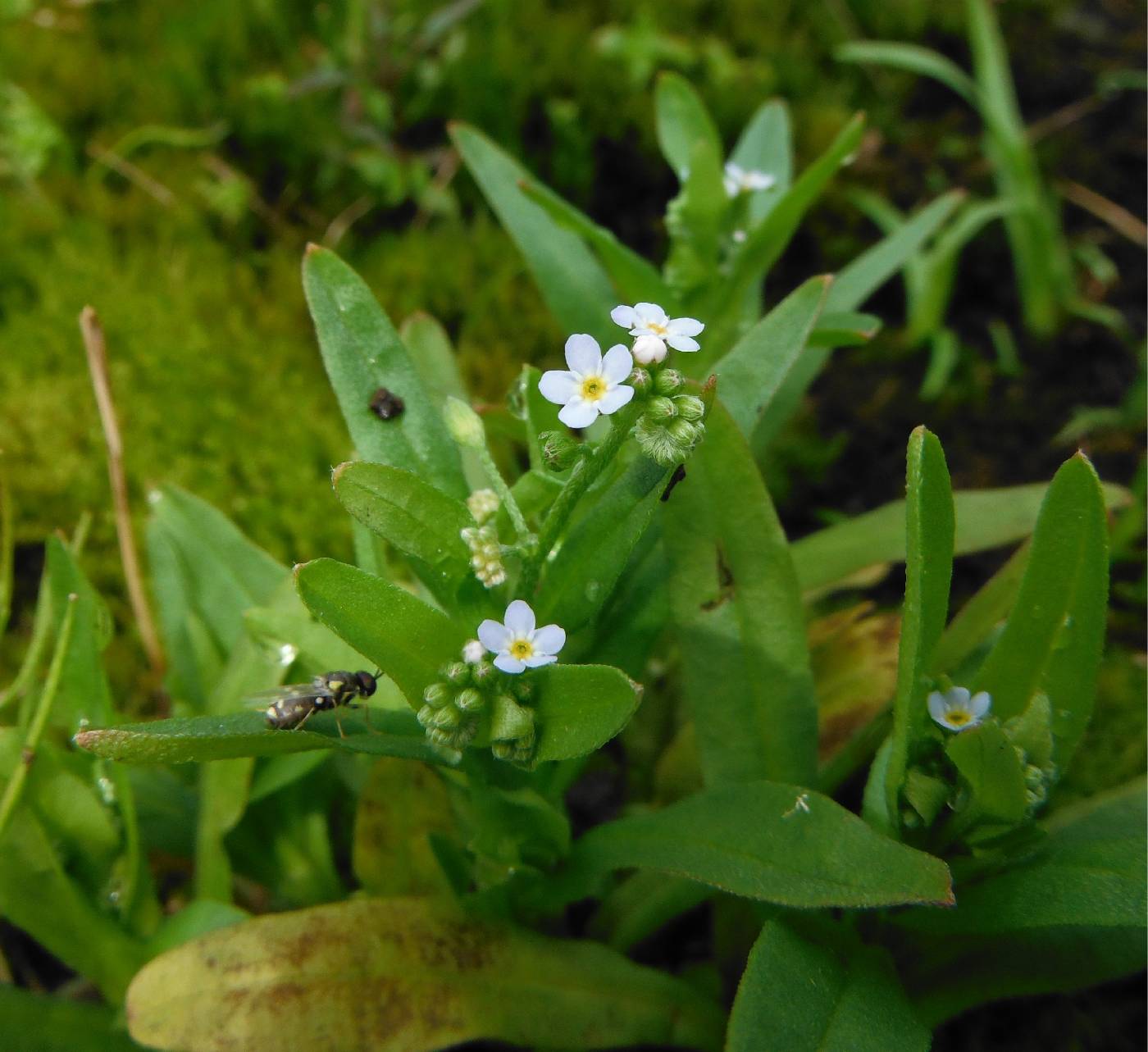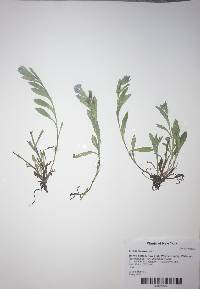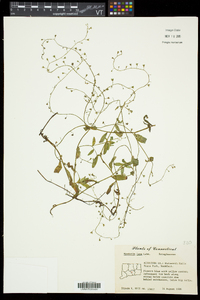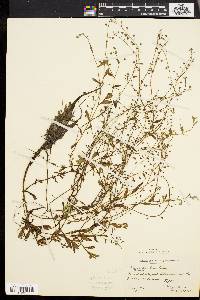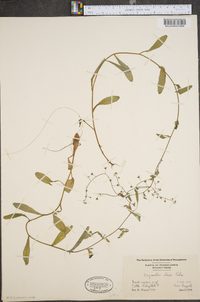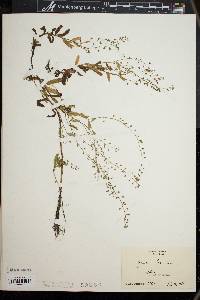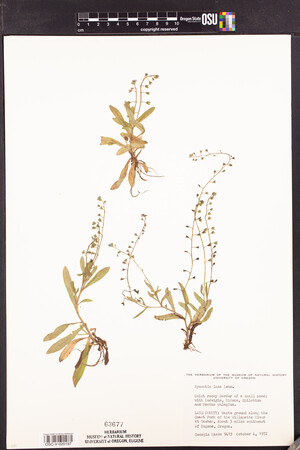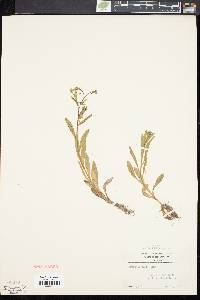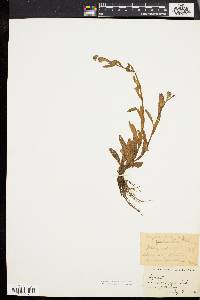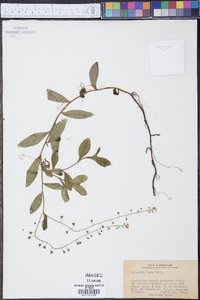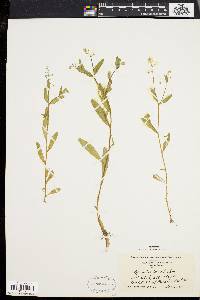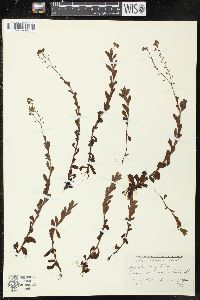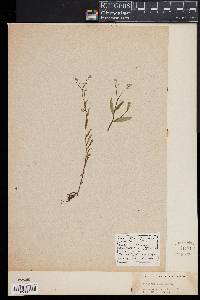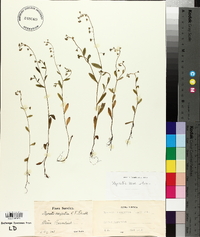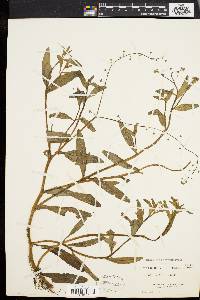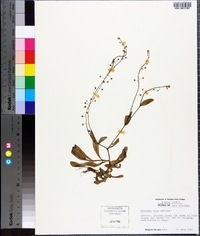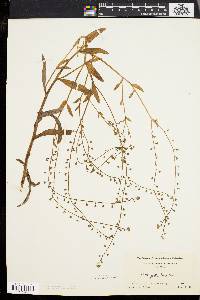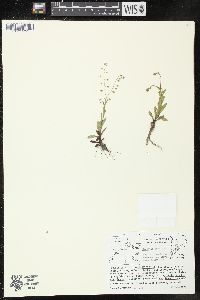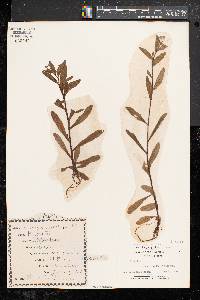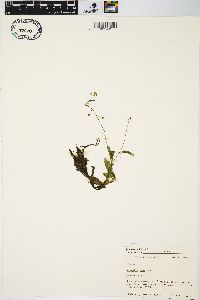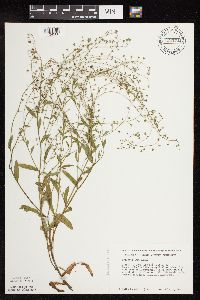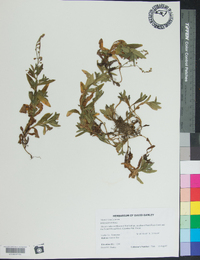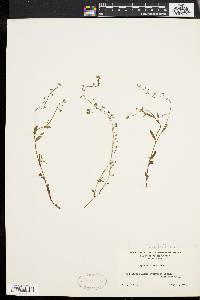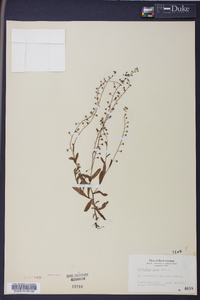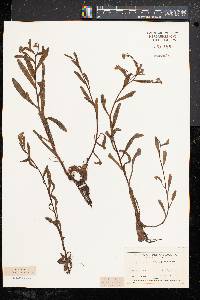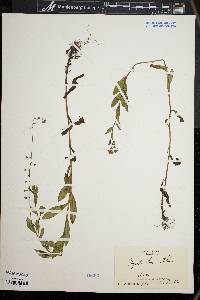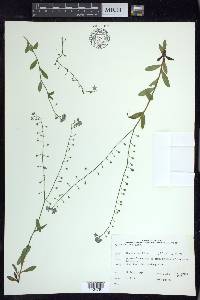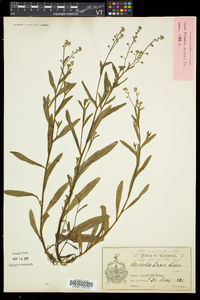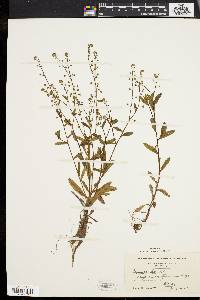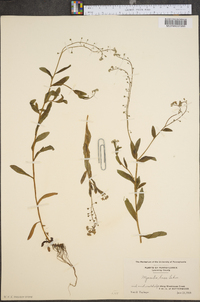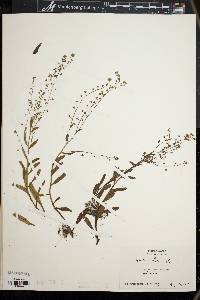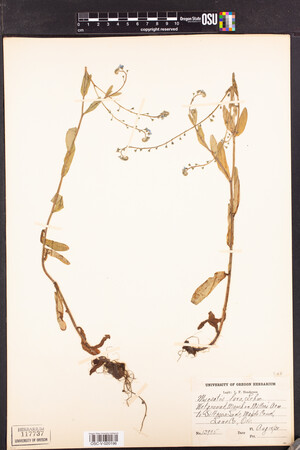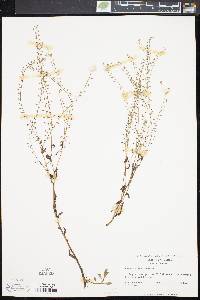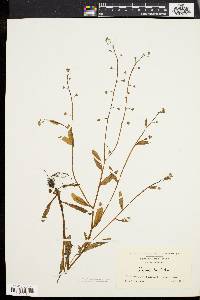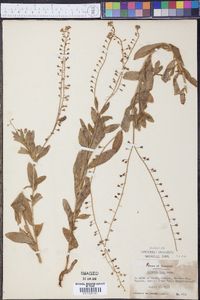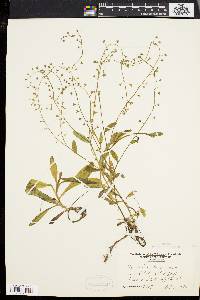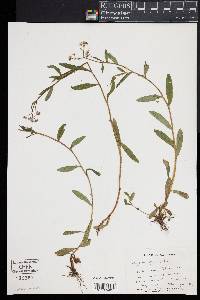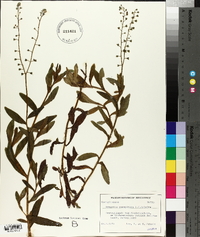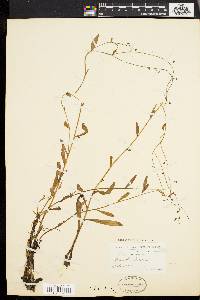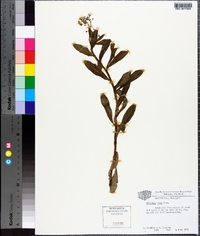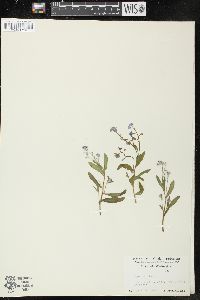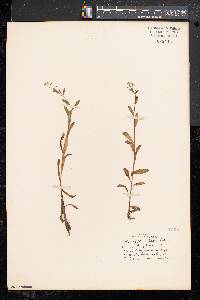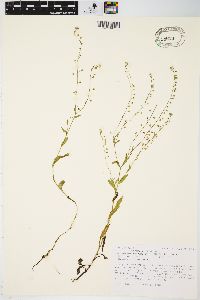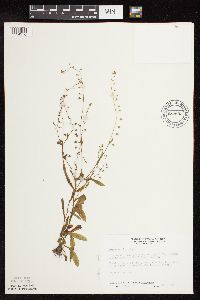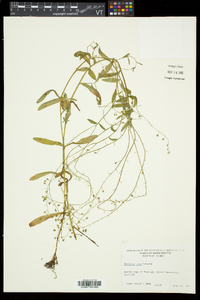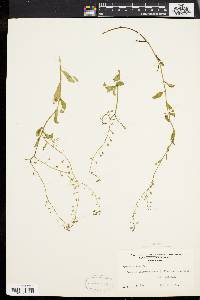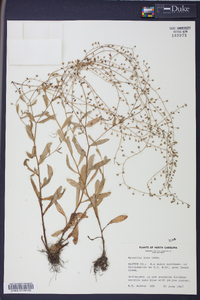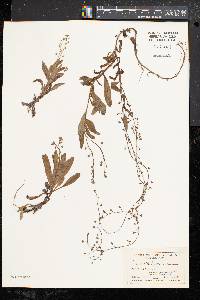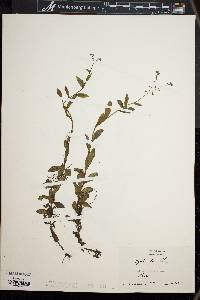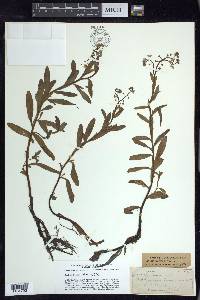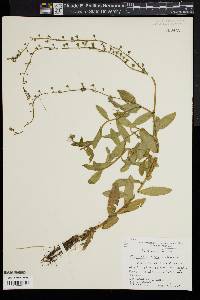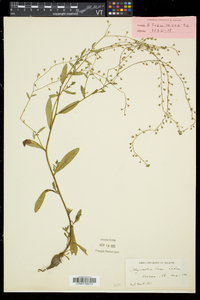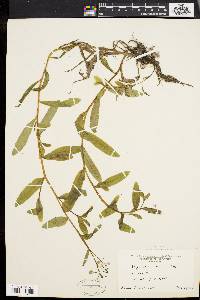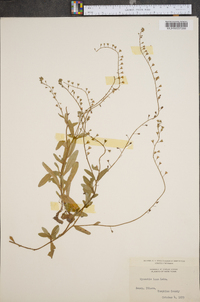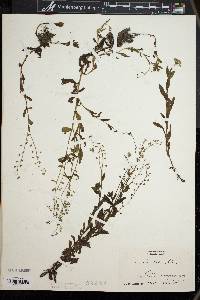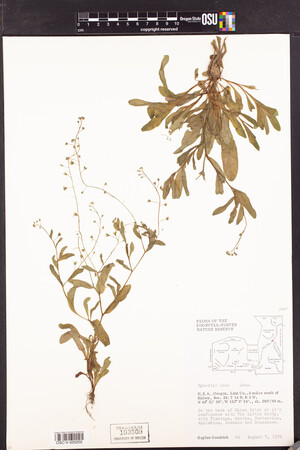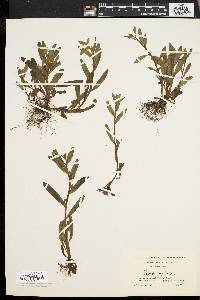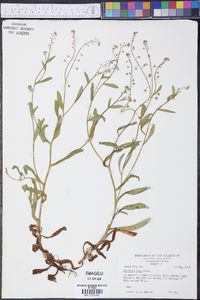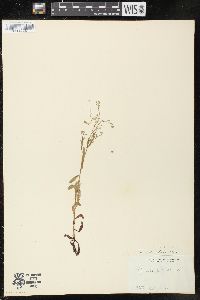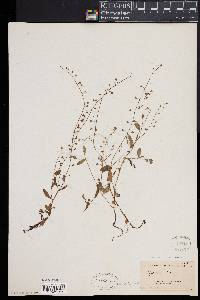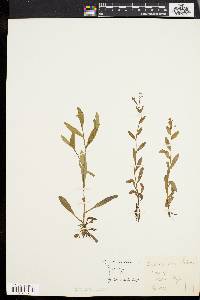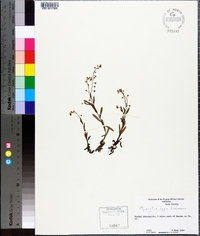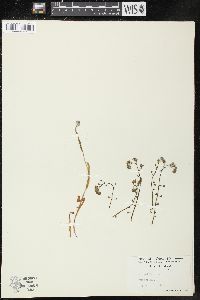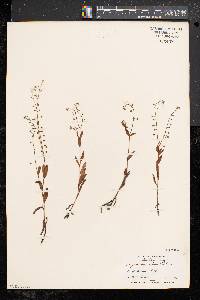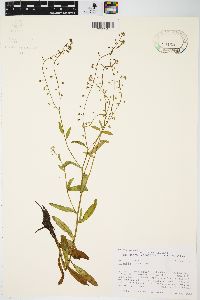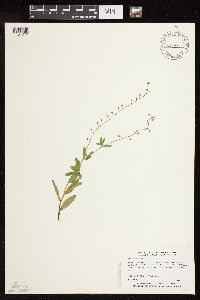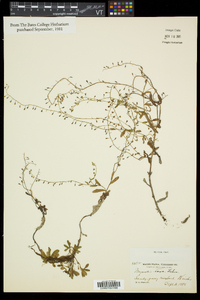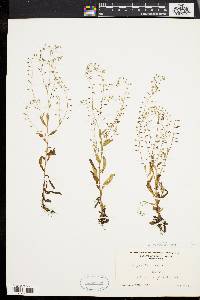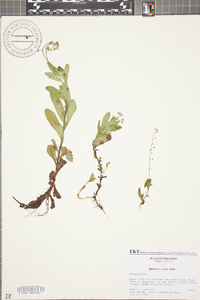Myosotis laxa
|
|
|
|
Family: Boraginaceae
Bay Forget-Me-Not
|
Short-lived perennial herb 10 - 40 cm tall Stem: ascending though often decumbent at base (but never rooting), slender, round in cross section, inconspicuously short appressed-hairy. Leaves: alternate, stalkless, appressed-hairy, under 8 cm long and 2 cm wide, elliptic to oblong or narrowly spoon-shaped, with blunt or rounded tips. Inflorescence: terminal, somewhat open, one-sided, bractless, appressed-hairy, spike-like branches with slightly coiled tips, and few to several, well spaced, stalked flowers. Flowers: stalked, blue with yellow centers, small (2 - 5 mm broad), radially symmetric, somewhat funnel-shaped with well-developed tube and shorter, spreading, rounded lobes. The spreading flower stalks are longer than the sepals (3 - 5 mm), and elongate in fruit. Sepals: five, but fused for about half their length, then separating into five, erect, triangular to egg-shaped lobes with pointed tips. The calyx as a whole is 3 - 5 mm long, and covered with short, straight, appressed, non-glandular hairs. Petals: five, but fused for over half their length (about same length as sepals), then separating into five, rounded, spreading lobes. At the base of the spreading petal lobes, the throat of the petal tube is blocked by five small projections or appendages (fornices). Stamens: five, attached to inside of petal tube by short filaments, the anthers not extending past the petal tube. Pistil: with one, deeply four-lobed, superior ovary; one, short (shorter than nutlets), inconspicuous style; and one, unlobed stigma. Fruit: a cluster of four, fairly erect, shiny, greenish black to black, small (under 3 mm), compressed or somewhat flattened lengthwise, somewhat egg-shaped nutlets with narrowed tips and a prominent lateral ridge running around the edge of the flattened faces. The nutlet clusters are enclosed by the remnant calyx, and held on spreading, at least 0.4 cm long stalks. Similar species: Myosotis laxa is most similar to the European species M. scorpioides, except that species has an angled stem that often roots at the base, its sepals are fused for more than half their length, the flowers are wider (5 - 10 mm), the petal tube is longer than the sepals, and the style is longer than the nutlets and sepals. Our other species of Myosotis have somewhat spreading, hooked, or glandular hairs on their sepals. Flowering: late may to September Habitat and ecology: Very restricted and localized to some moist ditches and banks of brooks in a few eastern counties of the dune area along Lake Michigan. Occurence in the Chicago region: native Notes: Myosotis laxa is a boreal plant that is found in northern regions around the globe (circumboreal). The dune areas of Indiana in the Chicago Region support about the most southern populations of this species except for those in more mountainous areas. Author: The Field Museum Short-lived perennial or even annual, 1-4 dm, slender, often decumbent at base, but not creeping or stoloniferous, inconspicuously strigose; lvs much like no. 1 [Myosotis scorpioides L.], averaging a little smaller; infl terminal, becoming open; mature pedicels spreading, equaling or mostly longer than the 3-5 mm cal; cal closely strigose, the lobes shorter or a little longer than the tube, equal or unequal; cor blue, the limb 2-5 mm wide; style distinctly surpassed by the nutlets. Moist soil and shallow water; interruptedly circumboreal, and found throughout our range. May-Sept. Gleason, Henry A. & Cronquist, Arthur J. 1991. Manual of vascular plants of northeastern United States and adjacent Canada. lxxv + 910 pp. ©The New York Botanical Garden. All rights reserved. Used by permission. From Flora of Indiana (1940) by Charles C. Deam Frequent in the Mineral Springs Bog in Porter County and also reported from Lake County by Pepoon as occurring on the banks of a cold brook near Miller and on the margin of the Little Calumet River. Probably restricted to these two counties. …… Indiana Coefficient of Conservatism: C = 10 Wetland Indicator Status: OBL |

